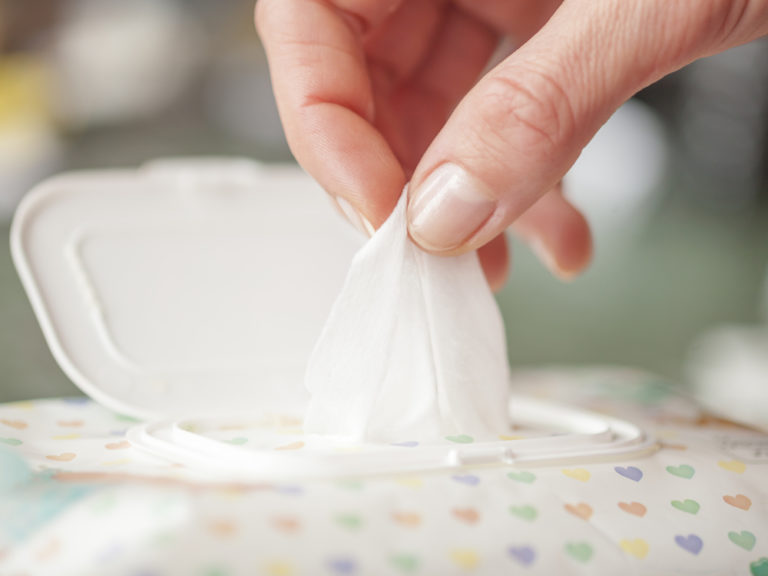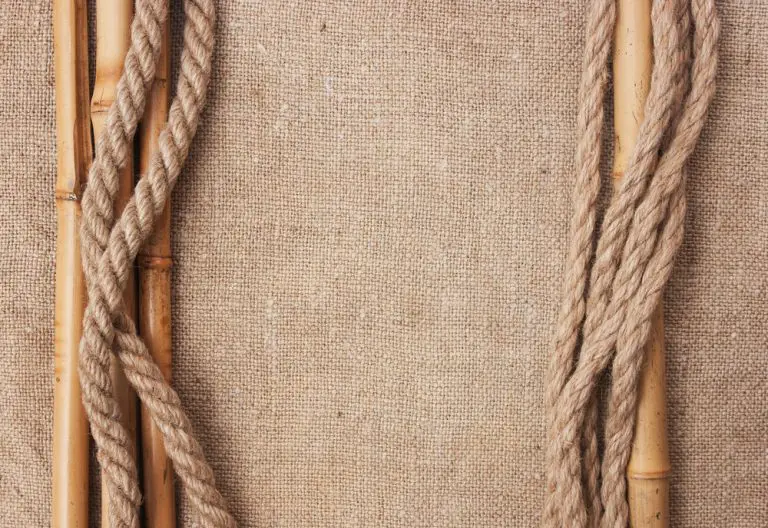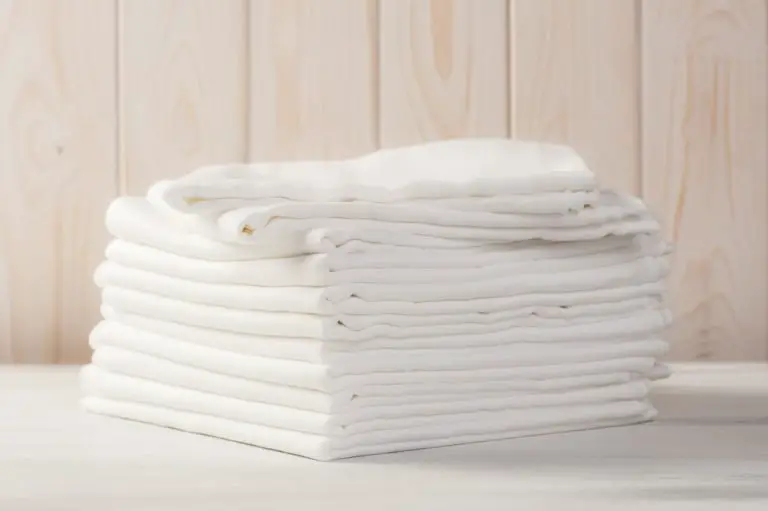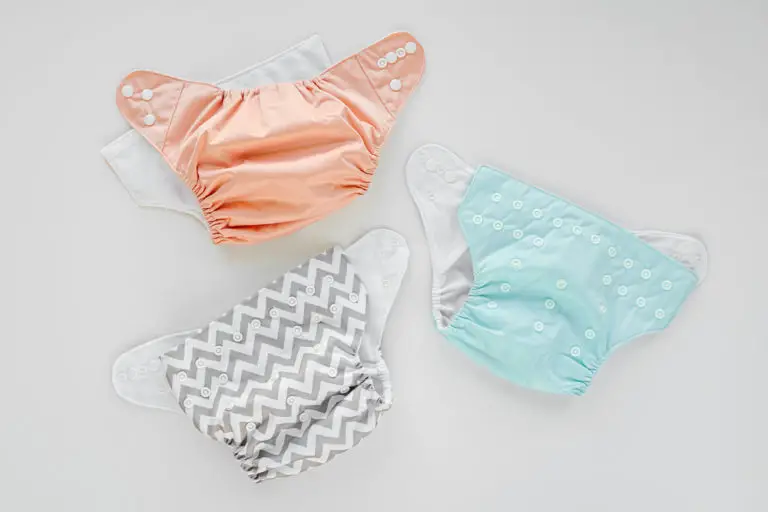Flannel Fabric: Properties, Pricing & Sustainability (2024)
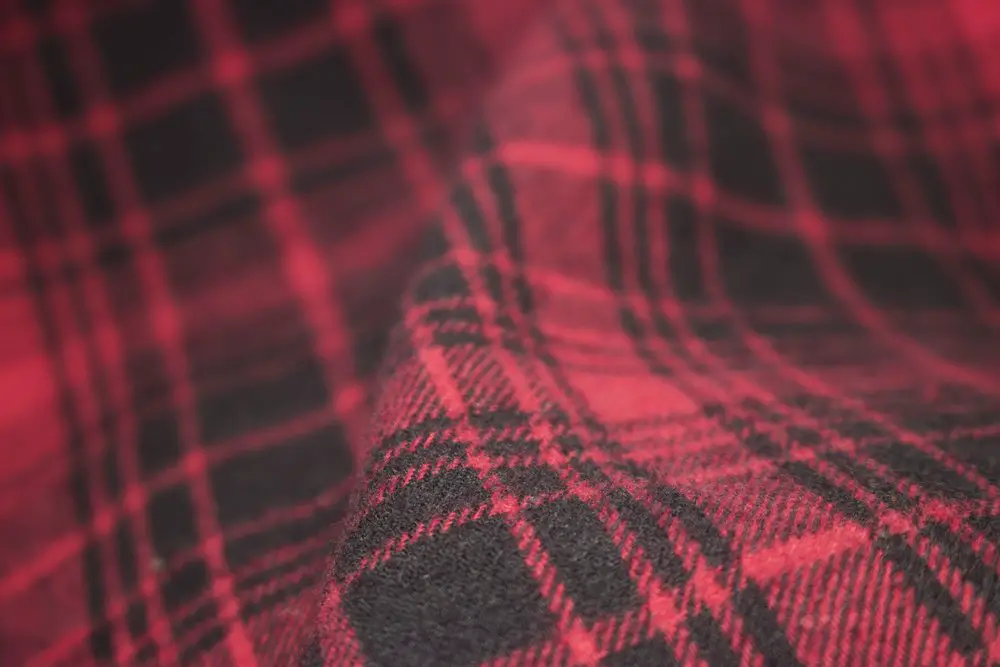
For many of us, when we hear flannel, we think of the rustic, plaid shirts of loggers and outdoorsmen; but flannel fabric is so much more! Flannel has been around since approximately the 17th century and is a soft, medium-weight cotton textile.
Because of its durability, flannel became popular amongst blue-collar workers, but today flannel is used widely in clothing, bedding, and even dress suits!
Fabric Profile
Fabric Name: Flannel
Synonyms: Cotton, plaid
Fiber Type: Cotton
Breathability: Somewhat breathable
Absorbency: Not very absorbent
Characteristics: Wrinkle resistant, durable, breathable, soft
Washing Requirements: Cold water wash, tumble dry on low
Common Uses: Shirts, jackets, skirts, bedding, cardigans, blankets, upholstery
Heat Press Temperature: 300 degrees
- What is Flannel?
- Types of Flannel Fabric
- Flannel Fabric Characteristics
- Downsides of Flannel Fabric
- Common Uses of Flannel Fabric
- Flannel Fabric Pricing
- How is Flannel Made?
- Where is Flannel Manufactured?
- Flannel Fabric Environmental Impact
- Flannel Fabric Certifications
- History of Flannel Fabric
- Flannel Fabric Alternatives
What Is Flannel Fabric?
Flannel material is a cotton fabric believed to have been invented in either Wales or Scotland in the 1600s and was initially made from wool. For many people, flannel cloth is synonymous with plaid, but it is important to know that while plaid flannel fabric is popular, plaid is a pattern, not a type of fabric.
Flannel is a medium-weight fabric characterized by having a soft brushed feeling on one or both sides. Flannel clothing is warm, breathable, and durable and is very trendy in the fall and winter seasons. You will commonly see flannel used for shirts, skirts, jackets, mittens, hats, scarves, and bedding in the colder months.
Today there are several types of flannel on the market, but 100% cotton flannel is the softest option and the most widely used. Flannel fabric has undergone several modifications and changes since its invention, but after over 400 years, it has stood the test of time and is a fabric that is here to stay!
Flannel vs. Plaid. Vs. Fleece
When people mention plaid, they often talk about flannel, but the two are not the same. In fact, plaid isn’t even a fabric; it is a pattern similar to stripes or polka dots. Plaid fabric can be any type of fabric, not just flannel.
On the other hand, Fleece is a different type of textile that is usually made from polyester. Fleece was invented to simulate the properties of wool and is therefore very soft, durable, breathable, and water-repellent.
Although flannel was originally made using wool, and you can still find wool flannel today, the majority of flannel on the market is now made from cotton. Some of the characteristics of flannel fabric are similar to wool but not all. For example, flannel is soft, breathable, and warm, but it does not wick moisture away or repel water.
Flannel is heavier than fleece, and while both fabrics will keep you warm, fleece is the more insinuating of the pair.
Types of Flannel Fabric
Consumers can choose from a handful of options in today’s market when selecting a modern flannel fabric.
There is cotton flannel, wool flannel, Ceylon flannel, vegetable flannel, baby flannel, diaper flannel, synthetic flannel, and flannelette.
All of these fabrics are considered 100% flannel, but they each have their own set of unique characteristics and properties.
Cotton Flannel
Cotton flannel is the most prevalent of the flannel fabrics. It can be made with regular or organic cotton, and it is considered the softest type of flannel. Cotton flannel is commonly used for shirts, jacket lining, and bedsheets. It is warm and insulating but incredibly soft.
Cotton flannel has a warm and cozy brushed feeling, making it an excellent choice for blankets or couch throws.
Cotton flannel became very popular during Britain’s colonial expansion, particularly in America, and was seen as an excellent garment choice for those working on the construction of the railways and in the logging industry.
Wool Flannel
In contrast to American most flannel found in Europe is wool flannel, and that makes sense since flannel was invented in the UK. However, sources aren’t 100% sure where the fabric originated, but likely either Scotland or Wales.
Cotton is a distinctly American plant while sheep are prevalent in the UK, so it makes sense that when cotton came to the U.S., manufacturers figured out a different way to create the fabric.
Wool flannel is sometimes referred to as Welsh flannel. Because it is made from wool, it has some moisture-wicking properties that cotton flannel lacks.
Ceylon Flannel
Ceylon flannel gets its name from the place it was invented, Ceylon, which is now known as Sri Lanka. Ceylon flannel is a marriage of wool and cotton flannel and is typically made from a 50/50 blend of the two fabrics.
During British imperialism, Ceylon was a hub with an expansive British market for trade. In addition, cotton grew well in the warm, Asian climates, and sheep farming was and still is a major industry, especially for those who lived in rural parts of the country. These factors all combined created the perfect setting for this version of flannel to be invented.
Vegetable Flannel
Vegetable flannel has a funny name, but it is just another way of saying flannel made from Scots pine trees. The fabric was invented by L. Leopold Lairitzin the 1800s.
To make vegetable flannel, one must collect a raw fiber known as waldwolle or forest wool from pine trees. Next, the pine oil is separated from the fibers, and finally, the fibers are spun into yarn.
Vegetable flannel is an excellent alternative for vegans or individuals who wish to stay away from animal products or those who may be allergic to wool flannel. It is commonly used to make shirts and comes in a variety of colors.
Baby Flannel
Baby flannel is exceptionally soft and is napped on both sides. As a result, it is a popular fabric for baby clothing, bedding, and blankets. Baby flannel can be made from any type of fabric used to produce flannel, but the softest are made with wool, cotton, or a blend of the two.
Because baby flannel is very trendy for making baby products and clothing, many patterns are geared towards babies and small children.
You will often find baby flannel in soft pastels and animals, flowers, stripes, and polka dots. Even though baby flannel is mainly used for baby products, you can use the fabric to make other flannel goods too.
Diaper Flannel
Diaper flannel is just what it sounds like; it is designed to be used for cloth diapers. Diaper flannel is napped on both sides, increasing its absorbency and making it softer to the touch for your baby’s bottom.
Diaper flannel is usually 100% cotton flannel fabric and is strong and durable. Its durability means it can withstand the multiple washes cloth diapers have to go through.
If cared for properly, diaper flannel products should last two children all the way through the potty training years. Diaper flannel is usually used to make prefold or flat diapers, but it is also used for burp cloths, blankets, and baby clothing.
Synthetic Flannel
All the flannel textiles we have discussed thus far have been either plant, wool, or cotton flannel-based. Synthetic flannel sits apart from the rest because it is a manufactured flannel, and it is typically flame-resistant. However, the flame retardant coating is added to the fabric and could potentially be toxic.
Synthetic flannel is made from polyester and is both wrinkle and stain-resistant, making it a popular choice for bedding. It also tends to be less expensive than cotton or wool flannel. However, the downside is that it is usually not as soft as its natural counterparts.
Flannelette
Flannelette fabric is a lightweight, soft, and breathable flannel that is typically used for bedding, sheets, and pajamas. Unfortunately, flannelette is not as strong as traditional flannel, and most products have a life of only a year or two.
Flannelette can be created using any type of flannel yarn and is often made from cotton. Another name for flannelette is brushed cotton since one side of the nap is brushed to create the smooth and soft texture it is known for.
Flannelette is a common flannel fabric for quilting. It is lightweight and breathable because it provides warmth and insulation without overheating.
Flannel Fabric Characteristics
Flannel fabric properties and characteristics vary slightly from style to style, but there are several common traits that all types share. Overall, flannel is a soft and durable fabric, with synthetic flannel being the least soft and flannelette the least durable.
Flannel is fairly breathable but is also insulating and will keep you warm. In general, flannel is not known as an absorbent fabric, but diaper flannel is the most absorbent of all types. In addition, flannel tends to be wrinkle-resistant. Finally, synthetic and wool flannel have flame-resistant properties; wool is natural, and synthetic is added.
Flannel fabric’s qualities make it a popular choice for winter shirts, skirts, suits, jackets, hats, mittens, scarves, sheets, and bedding. Flannel is also used to make cloth diapers, baby clothing, pajamas, dresses, vests, and quilting.
Flannel fabric is generally easy to wash and care for and can be washed and dried via machine.
Downsides of Flannel Fabric
Flannel fabric has so many redeeming qualities that it is difficult to find many downsides to it, but there are a few things people might view negatively about this textile.
Much of flannel is made from cotton, and non-organic cotton contributes widely to soil erosion and uses enormous amounts of water to farm and produce. Conversely, wool flannel is made from sheep’s wool, and while the animals are not harmed when they are sheared, some people prefer not to use animal products.
Synthetic flannel tends to have the lowest flannel fabric price, but there are concerns that adding the flame-retardant coating has toxic properties.
Cotton flannel sheets are popular in the wintertime; however, these sheets are prone to pilling and trapping heat. Flannel sheets are not recommended if you are a hot sleeper.
Flannelette is known to catch fire easily and burn fast, so while it is a popular choice for bedding and pajamas, be sure it is treated for flame resistance if using this fabric.
Common Uses for Flannel Fabric
One of the most prevalent things people use flannel fabric for is shirts. Plaid, flannel shirts are a trendy and popular choice in the fall and winter months. Once solely used for blue-collar workers, the soft, durable fabric has become almost synonymous with pumpkin patches and fireside chats.
Flannel is also commonly used for winter sheets, bedding, and quilting; however, it is not recommended if you tend to get hot when sleeping as flannel insulates well.
Flannel has also become a popular winter option for suits, skirts, dress vests, and jackets. However, flannel is not the same as plaid, and people are often surprised that flannel fabric color has a wide range of greys, blacks, solids, and neutrals used to design dress clothing.
In addition, because flannel is so warm, it is common to see hats, scarves, mittens, and gloves fashioned from the fabric.
Flannel Fabric in Cloth Diapers
Flannel fabric is often used for cloth diapers, but it is not a fabric you often hear mentioned on cloth diaper blogs and sites. Flannel is not a highly absorbent fabric which is why some may not favor it, but it is soft, breathable, and gentle on your baby’s skin.
Diaper flannel is a specific flannel style designed for cloth diapering, burp cloths, and other baby products. It is napped on both sides to increase its absorbency.
You can purchase diaper flannel fabric by the yard and sew your own prefold or flat cloth diapers. When using flannel diapers, you will also need to use waterproof covers to prevent leaks. You may also need to add additional inserts for absorbency. Parents can also use flannel to make washable diaper wipes because it is so soft and durable.
Flannel is an excellent choice for cloth diapers and wipes because the more it is washed, the softer it becomes. You can also dry it in the dryer, unlike many other types of cloth diapers.
Flannel Fabric Pricing
Overall, flannel fabric pricing trends towards the lower side of the fabric market. Flannel, like most other fabrics, is sold by the yard or bolt. In general, you can purchase a yard of flannel from a fabric retailer for $7.99 or less per yard; even high-quality flannel will only cost you about $9.99 per yard.
The quality and the flannel fabric weight will slightly affect the price; the higher the weight, the better the flannel. Goof quality flannel is considered five to six ounces. When looking at flannel sheets or bedding, the thread count will also factor into the price. The higher the thread count, the softer the sheets and the more they will cost.
Because flannel is such a popular fabric, there are large quantities of it, and it often goes on sale, so if you are looking for a specific style or pattern, keep your eyes on the deals at your favorite fabric retailer.
How is Flannel Fabric Made?
The process of making flannel begins with selecting a textile. Flannel can be made from cotton, wool, a blend, Scots pine, or synthetic materials such as polyester. The textile is then spun into a yarn that manufacturers will use to weave the fabric.
Flannel fabric is typically constructed using a plan or twill style weave. Flannel is usually a loose style weave that helps create ts breathability and lightweight texture. Next, depending on the flannel being produced, one or both sides of the nap are brushed to create the familiar flannel fabric texture.
The final stage in flannel production will depend on what type of flannel it is. Synthetic flannel typically receives a flame-retardant coating, while wool is naturally flame-resistant and doesn’t require such treatment. Cotton flannel that will be dyed usually receives a series of treatments, making it more durable and holding color better, including desizing, scouring, bleaching, or mercerization.
Where is Flannel Fabric Made?
Flannel is produced in several countries worldwide, with China being the largest manufacturer of synthetic flannel; Shaoxing Haoyouduo Textiles is one of the leading flannel producers in the country. India is the largest producer of cotton flannel, with well over a dozen manufacturers and exporters in the country. Lastly, Australia produces the most wool flannel, which is not surprising since the country has more sheep than people!
The U.S., however, has its fair share of flannel clothing producers. The appropriately named company, Flannel Shirts, is the leading flannel shirt manufacturer in the United States. In addition, they have a second company Flannel Clothing which sells blankets, dresses, pajamas, vests, jumpsuits, and bedsheets.
The Vermont Flannel Company is another leading manufacturer of flannel products in the U.S. They sell a wide range of handcrafted flannel products and are a family-owned business committed to sustainability.
Flannel Fabric Environmental Impact
The level of impact flannel production has on the environment depends on the type of flannel being made. For example, synthetic flannel has the most significant impact from a pollution standpoint because of the chemicals used and fossil fuel acquisition.
On the other hand, non-organic cotton requires massive amounts of water to farm and produce and contributes to soil erosion.
100% cotton flannel can be produced organically and through fair trade farming, which has a more positive environmental impact and a more socially positive one.
Flannel’s impact on the environment also depends on the dyes and other chemicals used during the treatment process. Companies that engage in an ethical production process and use fair trade products are more likely to use safer and non-polluting procedures and supplies. In addition, Fairtrade marketing leads to less product dumping and other unethical practices.
Lastly, cotton made from cotton, organic cotton, wool, and Scots pine are natural materials and therefore biodegradable.
Flannel Fabric Certifications
A handful of certifications are eligible for cotton based on the source material for the fabric and the flannel fabric quality. Woolmark is a certification explicitly for wool-based fabrics. Woolmark awards its certification for products made ethically and sourced with sustainable practices.
If the flannel is manufactured using recycled fibers, synthetic or natural, it is eligible to receive the Global Cycle Standard certification. Another certification available to flannel is the Global Organic Textile Standard.
The product must be sourced from organic materials and meet a slew of other requirements to receive this certification. Synthetic flannel is not eligible for this since it cannot be made organically.
The most widely known textile certification is the OEKO-TEX® Standard 100, which is awarded by an independent certification process based on all steps of the manufacturing process. The Standard 100 is broken down into four classes based on what consumers will use the fabric for.
There are also certifications flannel manufacturers can earn based on fairtrade and ethical practices.
The History of Flannel Fabric
The exact origins of flannel are debated, but scholars believe that flannel fabric history started in either Wales or Scotland. Despite its original locale, some flannel facts upon which historians agree.
Flannel was developed using sheep’s wool and was a hand or loom-woven material. Herders and farmers initially wore it to keep them warm while working outdoors. Some believe the name for flannel comes from the French word “flannelle,” while others state it is derived from the Welsh word “gwlanen,” meaning “woolen article.”
In either case, flannel made its way across the ocean from the UK to the US during the 18th century. It quickly became the fabric of choice for those working on the railways and other outdoor jobs such as logging and farming.
Many people credit Hamilton Carhartt as the father of American Flannel. He created his namesake clothing company in 1889 and, because of flannel fabric durability and strength, began mass-producing flannel shirts for the working man.
Flannel Fabric Alternatives
Flannel has several alternatives that individuals can consider. First and foremost, jersey-knit cotton is an excellent alternative to flannel bedding. It is soft and smooth, yet more breathable than flannel.
Other types of cotton could also be alternatives for flannel, the downside being that regular cotton products are more prone to wrinkling than flannel.
In addition, fleece and wool can work as flannel substitutes. Wool works well for suits, jackets, vests, and other outdoor and dress wear and naturally has moisture-wicking and water-repelling properties. Fleece is warm and insulating like flannel, and similar to wool possesses the ability to repel water and wick-away moisture.
For individuals looking for another rough and durable fabric for work and outdoor denim makes a great alternative to flannel. Denim is typically used for jeans and jackets, but denim shirts are rugged and keep your body warm, similar to flannel.
FAQ
Is flannel good for summer?
Flannel is typically not recommended for summer because of its insulating properties. The fabric tends to keep the wearer warm and it doesn’t wick sweat and moisture away.
Is flannel warmer than cotton?
Much of the flannel is made from cotton, but because of the way it is woven and napped, it tends to be warmer than a regular cotton garment.
Is cotton flannel durable?
Yes, cotton flannel is considered an incredibly durable fabric which is why it was originally mass-produced for railway workers.
What is flannel good for?
Flannel has many wonderful uses such as shirts, jackets, skirts, suits, baby diapers, blankets, hats, gloves, scarves, and quilts.
Is flannel good for cold weather?
Flannel is excellent for cold weather because it insulates heat and keeps the wearer warm. However, many people prefer to use flannel sheets in the wintertime to stay warm.
Is cotton flannel absorbent?
Cotton flannel is not known for being absorbent, it has some absorbency but it is not meant to get soaked or to be used in products like rain jackets.
Is flannel warmer than fleece?
Both fabrics do an excellent job at insulating the wearer however, fleece traps more heat in which can make it seem warmer. If you tend to sweat a lot you may be more comfortable in flannel.

Laurel Davidson
Laurel brings her passion for parenting and years of problem-solving experiences to ParentingMode. She is the editor of ParentingMode, ensuring that the content is relevant and valuable to the readers. Laurel received her master’s degree in public administration with a certificate in economic development. She is a stay-at-home mom, raising two adorable kiddos, Aurora and Thomas. Laurel enjoys sharing her experience as a parent, traveling, and good food.

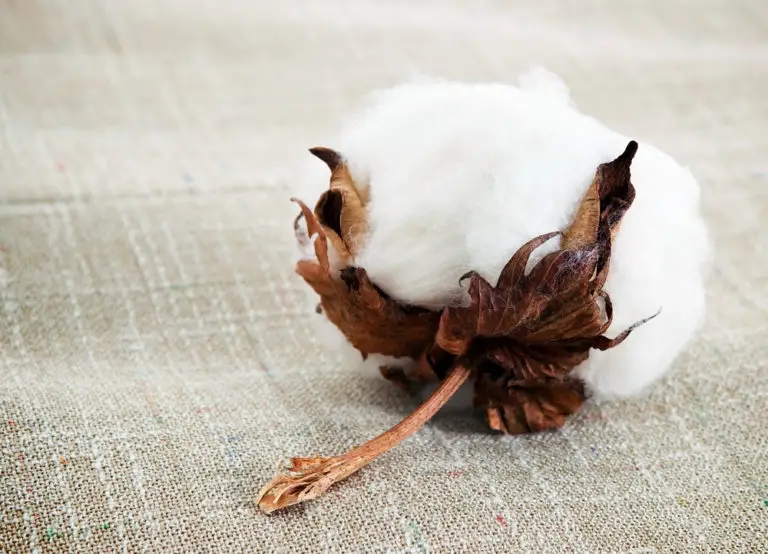
![10 Best Biodegradable Diapers [Chemical-Free and Safe]](https://parentingmode.com/wp-content/uploads/2022/06/Depositphotos_27923761_S-768x512.jpg)
